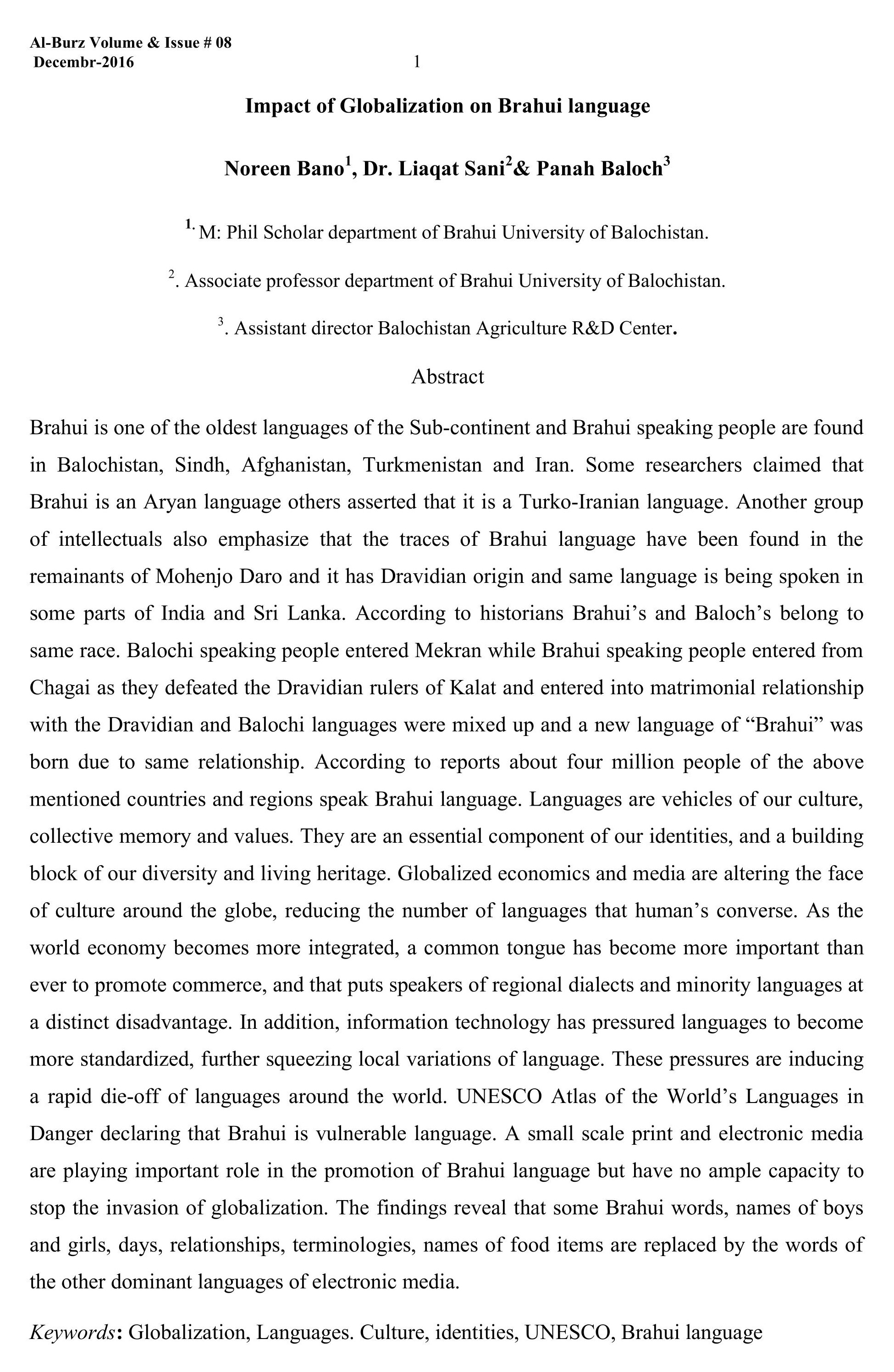Impact of Globalization on Brahui language
DOI:
https://doi.org/10.54781/abz.v8i1.140Keywords:
Globalization, Languages. Culture, identities, UNESCO, Brahui languageAbstract
Brahui is one of the oldest languages of the Sub-continent and Brahui speaking people are found in Balochistan, Sindh, Afghanistan, Turkmenistan and Iran. Some researchers claim that Brahui is an Aryan language others assert that it is a Turko-Iranian language. Another group of intellectuals also emphasize that the traces of Brahui language have been found in the remainants of Mohenjo Daro and it has Dravidian origin and same language is being spoken in some parts of India and Sri Lanka. According to some historians Brahui’s and Baloch’s belong to same race. Balochi speaking people entered Mekran while Brahui speaking people entered from Chagai as they defeated the Dravidian rulers of Kalat and entered into matrimonial relationship with the Dravidian and Balochi languages were mixed up and a new language of “Brahui” was born due to same relationship. According to reports about four million peoples of the above countries and regions speaks Brahui language. Languages are vehicles of our cultures, collective memory and values. They are an essential component of our identities, and a building block of our diversity and living heritage. Globalized economics and media are altering the face of culture around the globe, reducing the number of languages that human’s converse. As the world economy becomes more integrated, a common tongue has become more important than ever to promote commerce, and that puts speakers of regional dialects and minority languages at a distinct disadvantage. In addition, information technology has pressured languages to become more standardized, further squeezing local variations of language. These pressures are inducing a rapid die-off of languages around the world. UNESCO Atlas of the World’s Languages in Danger declaring that Brahui is vulnerable language. A small scale print and electronic media are playing important role in the promotion of Brahui language but have no ample capacity to stop the invasion of globalization. Surveys and research finding are also shows that many Brahui words, names of boys, girls, days, relationships, terminologies, names of food items were replaced by the words of the other dominant languages of electronic media.References
Brahui A. Rehman . 2012, (Second edition) Brahui Ziban o Adab Ki Mukhtasar
Tarikh, Brahui Academy Pakistan, Quetta.
Javed Akhar , 2007, Brahui Lisaniat, Brahui Academy Pakistan, Quetta.
Marri S. Muhammad . 2014, Balochi Ziban o Adab, Ghosa e Adab, Quetta
Mubarak Ali . 2004, Globalization aur Madri Zibanen compiled by Arif Tabassam, Institute of Development Studies and Practices (IDSP), Pakistan.
Mazhar Arif, 2004, Globalization aur Madri Zibanen compiled by Arif Tabassam, Institute of Development Studies and Practices (IDSP), Pakistan.
Rehman Tariq Dr. 2004, Globalization aur Madri Zibanen compiled by Arif Tabassam, Institute of Development Studies and Practices (IDSP), Pakistan.
Siddiqi Khalil. 2000, Ziban Ka Irtaqa, Qalat Printers, Quetta
Webliography
www.brahvilanguage.com
https://.en.wikipedia.org/wiki/Globalization

Downloads
Published
How to Cite
Issue
Section
License
Copyright (c) 2021 Alburz

This work is licensed under a Creative Commons Attribution-NonCommercial-ShareAlike 4.0 International License.
Alburz has licensed under a CC Attribution-NonCommercial-ShareAlike 4.0



